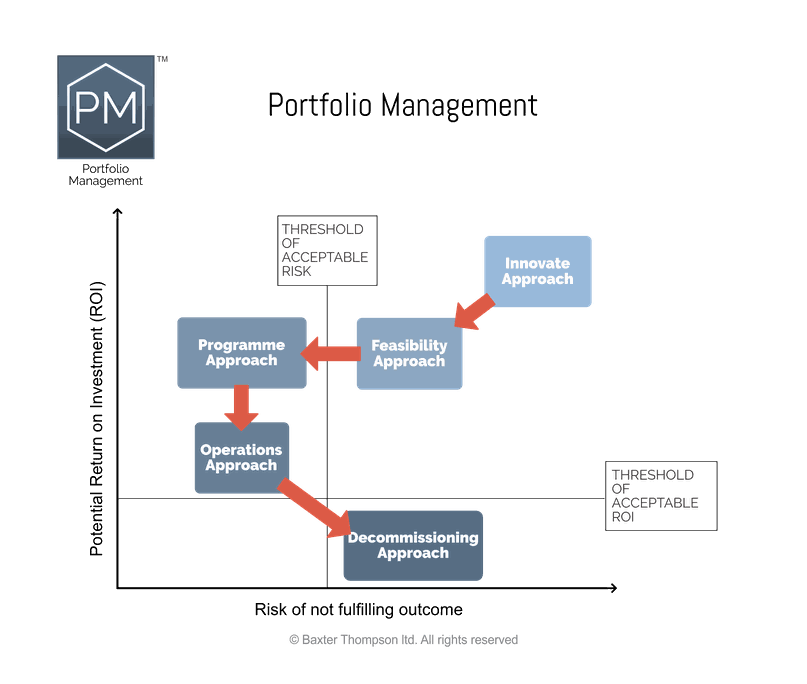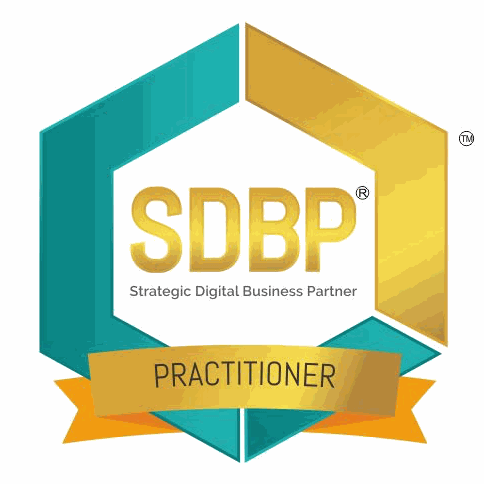
Is there a mad rush at the start of the financial planning season to allocate budget for next years projects? Despite this mad rush, is there always CAPEX left in the budget simply because there have not been enough approved business cases to spend it?
Are there more projects in progress than actually got delivered last year?
Do projects actually reflect the strategic intent of the organisation or are they indeed more a reflection of the needs of the person who shouts loudest?
Typically decision making is made in discrete jumps without referencing the longer-term aims of the organisation. Leakage of ideas and projects both in and out of the pipeline can then substantially reduce the potential value created for the organisation.
We take a lifecycle view. We recognise that throughput, from conception of the value proposition to delivery and then retirement, is a key source of credibility for the organisation and Portfolio Management.
To manage the leakage of ideas, products and projects both into and out of the roadmap, we reference along the lifecycle the strategic intent of the organisation, to ensure that there is continuous alignment and value generated.
Fundamentally, Portfolio Management has two questions to answer- do we have a balanced portfolio of activity based on ROI and risk, and secondly what activity shall we take to the next stage? We divide this into a lifecycle into five stages:
-
Innovate Approach: Driving lessons learnt, failed(!) experiments, successful proof of concepts, validated business models and minimum viable products.
-
Feasibility approach: Reviewing scalable implementation pilots, defining business cases and doing impact assessments.
-
Programme Approach: Delivering Products, Programmes and Projects according to ROI and risk according to information presented in business cases.
-
Operational approach: Optimising a return on investment through continuous improvement and managing expectations.
-
Decommissioning approach: (Managing technology debt) Assessing whether products or services still deliver value and selecting those services that are candidates for decommissioning, to restart the cycle again.
To enable this lifecycle view we need to implement:
-
Governance: Effective executive decision making.
-
Demand Management: Marshalling, triaging and prioritising competing requests for resources.

The Outcome
Feel sufficiently confident to implement the techniques on finishing the course to enable effective decision making and maximise your portfolio ROI!
Benefits of applying the workshop techniques
The right data to enable executive decisions ROI / Risk.
-
Reduce the forecast error in assessing the value and outcomes in business cases through better risk management.
-
Enable effective decision making through governance - ask the right questions, provide criteria for assessment and define decision rights.
Accelerate more rewarding products or projects
-
Use of the latest proven methods to improve throughput and quickly make decisions
-
Create options to choose from rather than first business case "past the post".
Stop wasteful activity sooner
-
Reference Strategic documents in the negotiation and prioritisation of the next tranche of work to be started.
-
Review the value realisation of projects to ensure they are meeting the target and decide GO/ NO-GO.
Balance the short-term and the long-term
-
Balance your portfolio of activity according to the risk appetite of the Decision Makers
-
Ensure the right criteria are being applied in the right context to make effective decisions.
-
Create dashboards that help Decision Makers understand the relative position of their portfolio
Portfolio Management Syllabus
-
Lifecycle, Risks and Roadmaps.
-
Strategy and Portfolio.
-
Balancing the Portfolio.
-
Risk and Decision Making.
-
Types of Governance Approaches.
-
Governance Roles and Framework .
-
Governance Boards & Guidelines.
-
Decision Making Criteria & Outputs.
-
Generating Options to Manage.
-
Demand Management Imperatives.
-
Managing Throughput Through The Stages.
-
Visual Management.
-
Estimation of ROI.
-
Risk Analysis.
-
ROI / RIsk Option Assessment.
-
Overview and Approach.
-
Variation and Forecasts.
-
Novelty and Feasibility Approach.
-
Business Cases.
-
Project Frameworks - Agile vs Waterfall.
-
Ownership of the Life Cycle.
-
Application tips.
-
Service Frameworks - Viewpoint.
-
Application tips.
-
Technology Debt.
-
Assessment of Technology Debt.
Sample video from our training course
This video comes from the section Overview / "Fundamentals".
What you get:
Clear framework
Approach oriented towards business outcomes.
Tools you can use
Celebrated by delegates for providing fresh insight into knotty problems.
Practice
Exercises either in a workshop format or as an individual exercise. The opportunity for feedback on your work and a true-to-life scenario-based exam!
Reflection and interaction with peers
The opportunity to stand back and reflect on personal and team performance in a safe environment. Share experiences with the tutor and other delegates.
What we bring:
Thought leadership
Analysis of industry trends and methodologies. Customer-based research and case studies
Insight
Contextual understanding of your challenges, exchange of experience and discussion on how to make changes in your workplace.
Years of experience
All tutors are senior managers who have done similar roles.
Listening and coaching skills
Our workshops and coaching sessions help surface new perspectives on old problems.
- Set up executive decision making
- Validate and prioritise ideas
- Manage requests and delivery expectations
- Use ROI and Risk decision criteria
- Balance activity with outcomes
- Maximise return and reduce risk through project and service delivery
- Manage technical debt
-
Coming soon!
- Discuss your requirements with us to see how we can help
- Be the first to find out about new whitepapers, blogposts, podcasts, videos and events relating to Strategic Digital Business Partnering.


